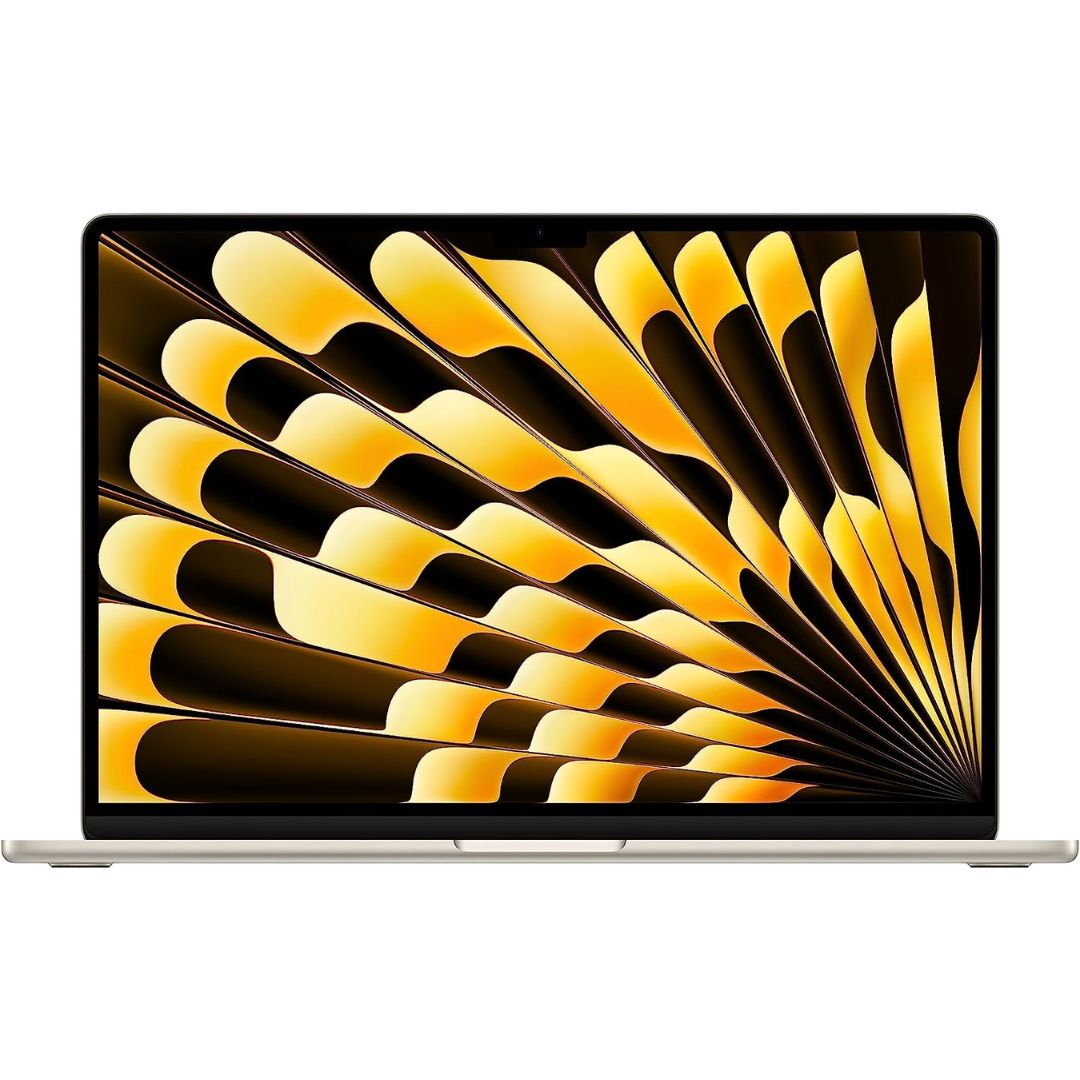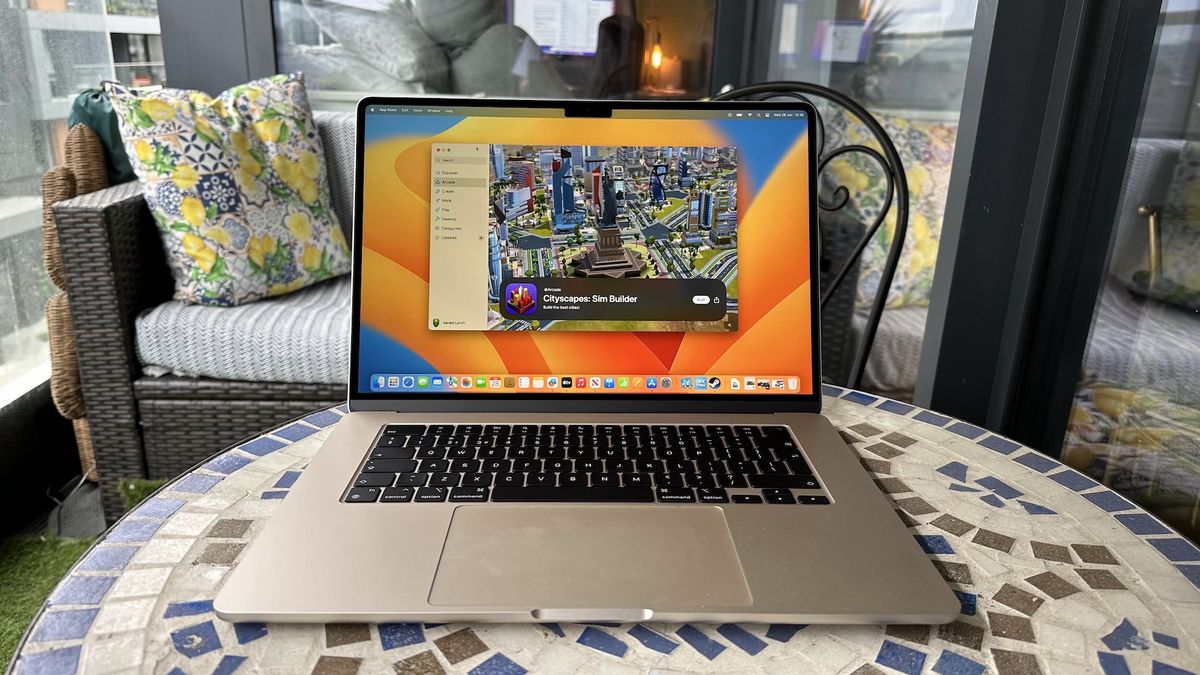Though the WWDC 2023 spotlight was stolen by the Apple Vision Pro headset, a much-requested new Mac launched at the developer event too — the 15-inch MacBook Air, the long-awaited sweet spot between price, portability, and screen size, designed to bridge the gap between the Air and MacBook Pro ranges.
Taking its cues from the luscious MacBook Air redesign that we enjoyed so much in 2022, the 15-inch MacBook Air is almost the exact same machine scaled up by a couple of inches. It’s the same M2 chip (in its higher GPU-core guise), the same port selection, the same colors, and the same fanless design.
And that’s a good thing! The 13-inch MacBook Air that launched in 2022 earned a coveted 5-star rating in our review, and if it ain’t broke… don’t fix it. It results in one of, if not the best MacBook Apple’s ever made.
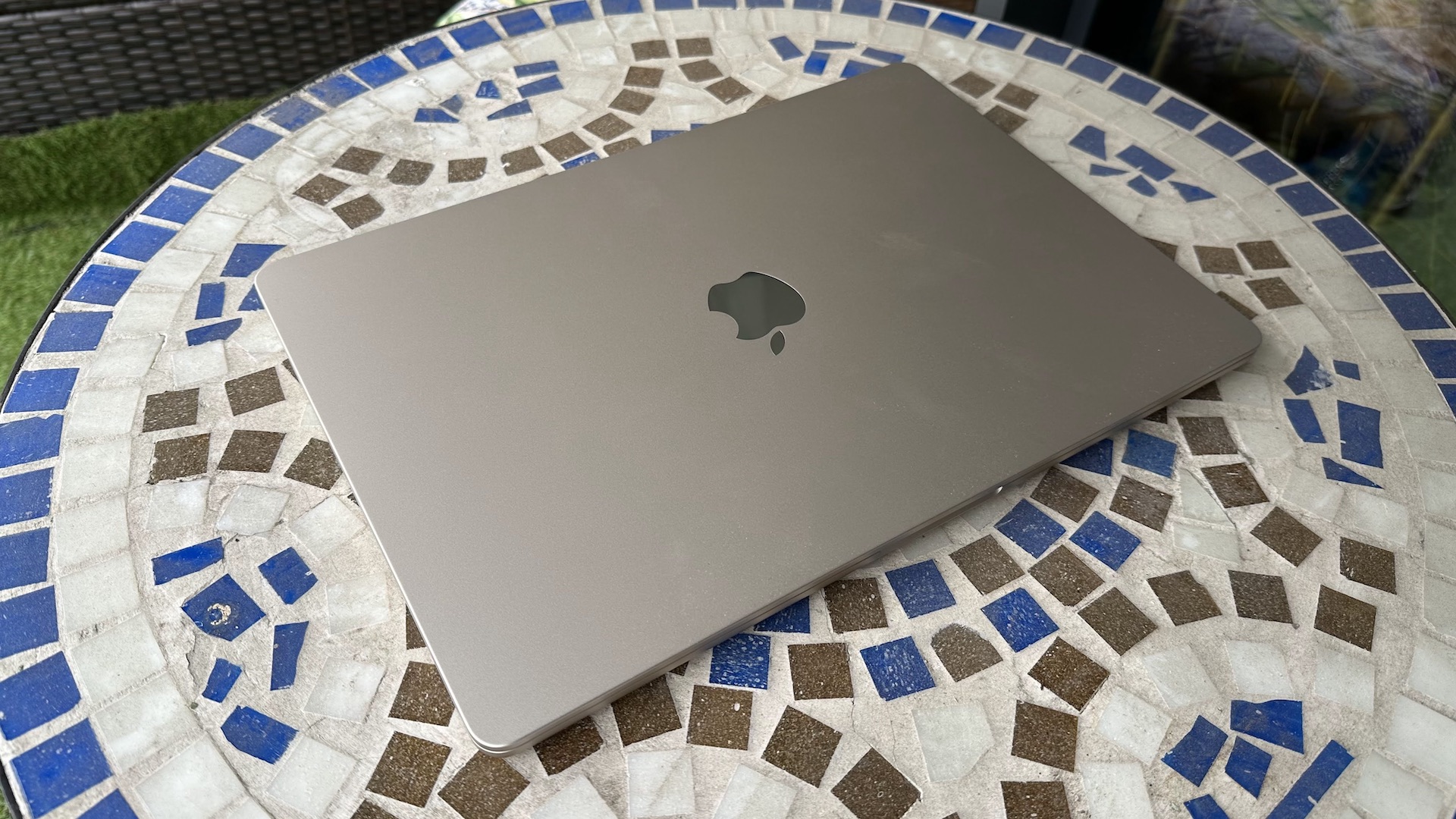
But the 15-inch MacBook Air does pose an interesting couple of questions: what constitutes the portability that the Air range stakes its name against? And where does the 15-inch MacBook Air sit when placed alongside the 14-inch and 16-inch MacBook Pro models?
- Not sure which MacBook is for you? Check out our in-depth MacBook Pro vs MacBook Air guide
MacBook Air 15-inch (M2, 2023): Price and availability
The 15-inch MacBook Air is available now, having debuted at WWDC 2023, and lands at a price point that shouldn’t make potential customers wince, taking into consideration the Apple brand’s usual high-end premium.
You can get the 15-inch MacBook Air from $1,299 / £1,399 for the entry-level model that comes with an 8-core CPU, 10-core GPU, 8GB of RAM and 256GB of storage. That’s a launch price just $100 more than what the 13-inch M2 MacBook Air came in at last summer, despite the extra inches — though UK pricing remains more expensive.
It feels like a bit of a no-brainer then to grab the 15-inch MacBook Air.
Unlike the 13-inch MacBook Air, you can’t configure the GPU core count, so the only purchase considerations you have to make with the configuration are the amount of RAM you need and storage (as well as colors, of course). The step-up model costs $1,499 / £1,599 and bumps the SSD to 512GB, keeping the 8GB of RAM. But on top of that, you can increase the RAM to 16GB for an extra $200 / £200, or go to 24GB for an additional $400 / £400. A 1TB SSD will add / £200 to that price, while a 2TB storage upgrade is a frankly ridiculous $600 / £600. I’d say the sweet spot is at 16GB RAM with either 512GB or 1TB of storage. All tallied, a fully-loaded 15-inch MacBook Air can set you back as much as $2,499 / £2,599.
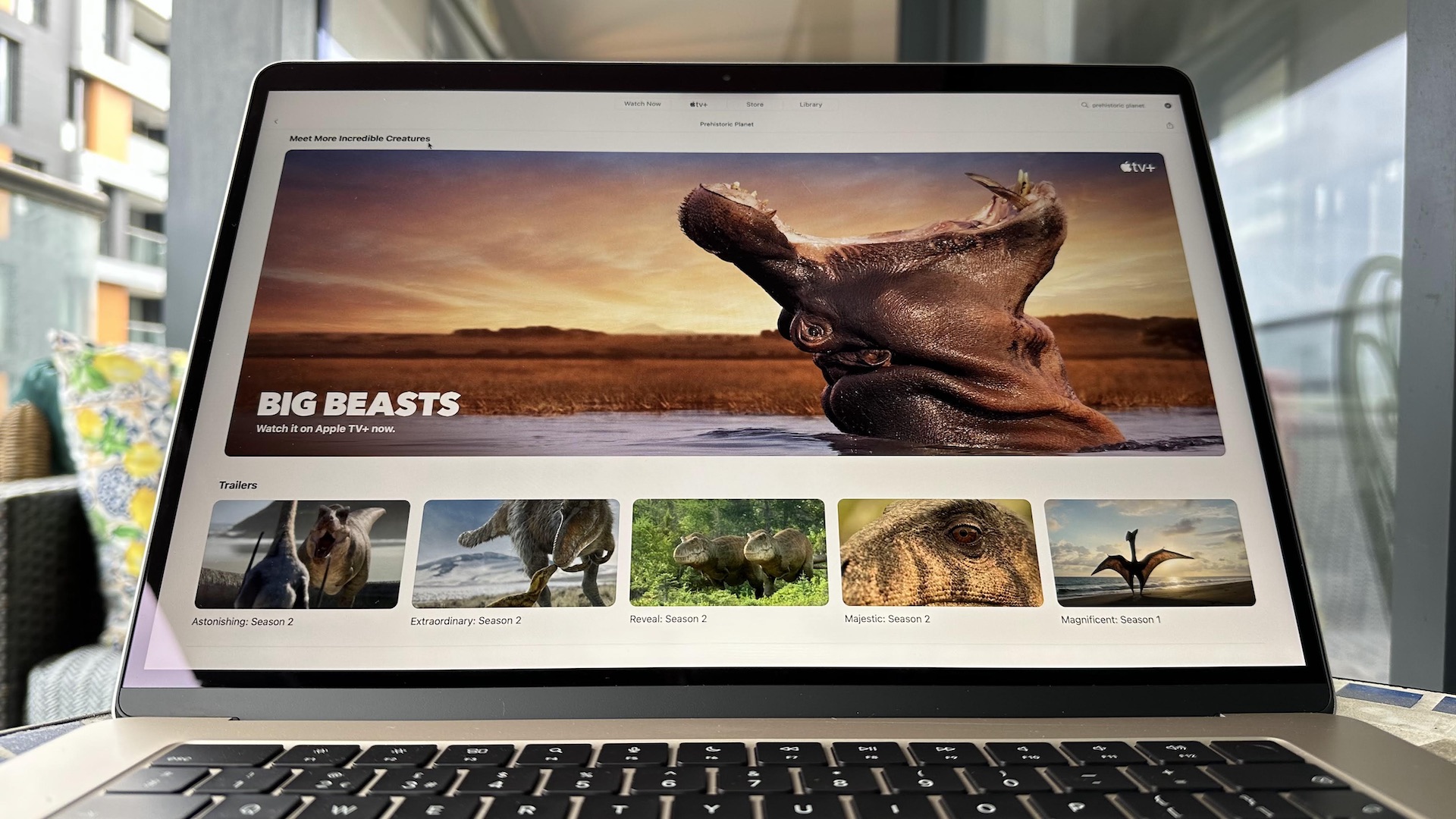
With the higher GPU-core count over the base 13-inch MacBook Air and larger screen size, that pricing makes the 15-inch model very attractive — though I’m sure that there will be people out there who would have been happy to drop the price even lower and settle for the same 8-core GPU the 13-inch model offers, even if that hits the performance of the slightly-higher resolution display. On top of that, the 70W USB-C fast-charger — an optional paid-for extra with the 13-inch model — is thrown in for free, or you can stick with the standard 35W Dual USB-C port option.
It feels like a bit of a no-brainer then to grab the 15-inch MacBook Air — provided portability isn’t an issue for you. But! Complicating matters, Apple has now dropped the entry price of the 13-inch model to $1,099 / £1,149. It’s arguably the price point that machine should always have started at, and does make for a great value, 5-star product.
For the purposes of this review, we’re looking at a 16GB / 1TB MacBook Air 15-inch model.
MacBook Air 15-inch (M2, 2023): Hardware and design
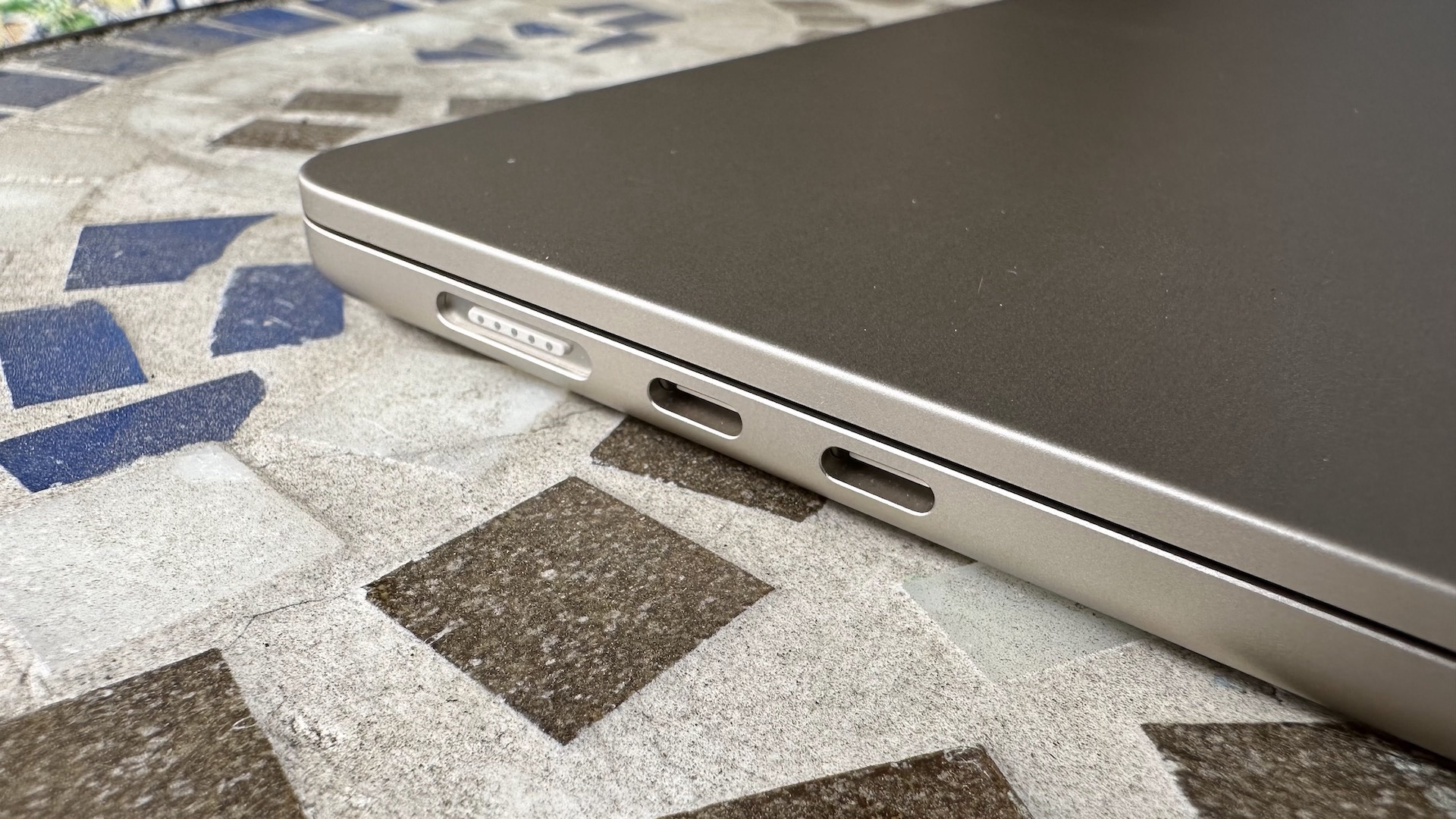
I was blown away by the 2022 redesign of Apple’s MacBook Air lineup, and this super-sized 2023 revision for the 15-inch MacBook Air is just as beautifully finished.
You may need a slightly bigger backpack to house it, and it might be more of a squeeze on an airplane’s table rest, but you’ll hardly notice the difference when carrying it around.
Like the 13-inch model, Apple has done away with the wedge-like design that characterized the MacBook Air chassis for many years. Instead, it’s a uniform thickness around its casing. Apple claims it’s the world’s thinnest 15-inch laptop, and with measurements of 13.40 x 9.35 x 0.45 inches (340 x 212 x 15.6mm), that claim bears out. Perhaps most impressively, it’s barely any thicker than the 13-inch Air, which measures 11.3mm. In terms of weight, you’re looking at 3.3 pounds (1.51kg), against the smaller 13-inch model’s 2.7 pounds (1.24kg).
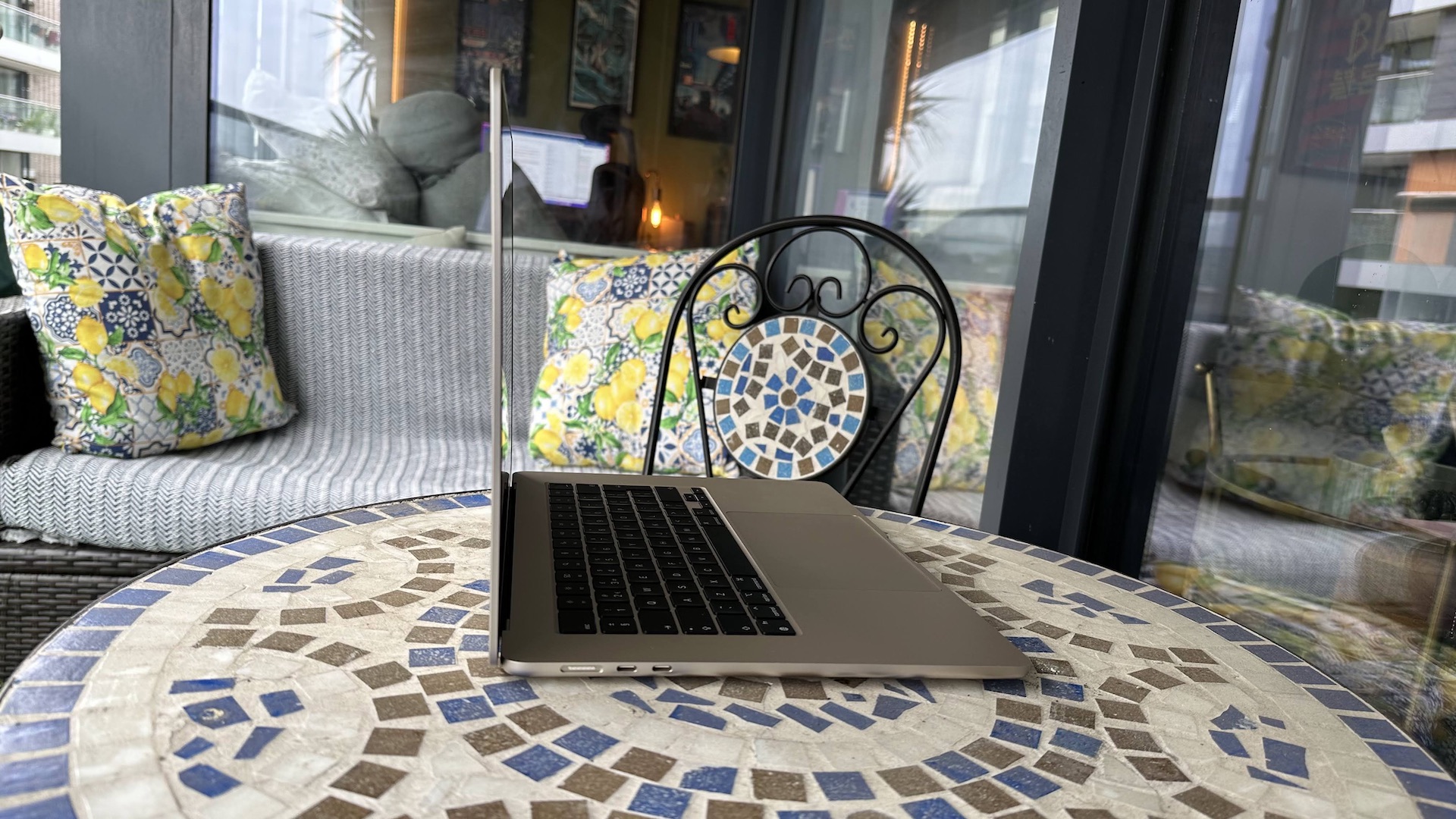
The most notable change of course is the screen size. Whereas the 13-inch MacBook Air has a 13.6-inch diagonally-measured screen, the 15-inch offers a 15.3-inch display. There’s a slight bump in resolution too from 2560 x 1664 in the 13-inch to 2880 x 1864 in the 15-inch version. In use, that bump won’t really be noticeable though, as it just allows Apple to maintain the same pixel density across that larger canvas. Likewise 500 nits of brightness and support for the P3 wide color gamut returns. It’s more than bright and sharp enough then, with great color accuracy and excellent viewing angles, even if the high refresh rate of the Pro models remains sadly absent.
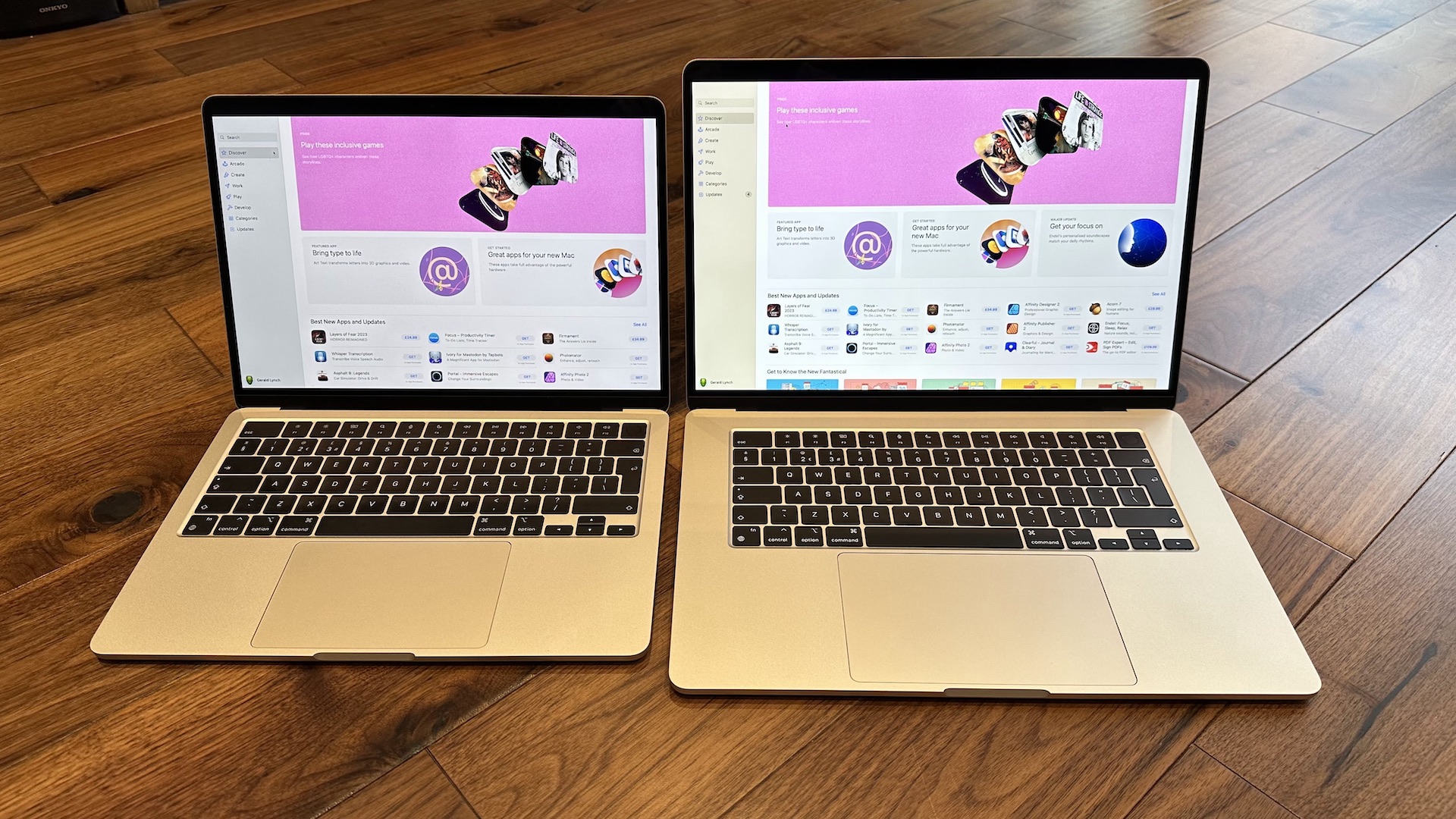
In use, it makes for a far more generous multitasking experience — while macOS has lots of great multitasking functions, from Stage Manager for Mac to desktop spaces, you often can’t beat just running two windows side by side. On the 15-inch Air, you can do that without having to squint.
With those measurements and weight accounted for then, is the 15-inch MacBook Air still a comfortably portable machine? Personal preference will come into play here, but I’d say yes — you may need a slightly bigger backpack to house it, and it might be more of a squeeze in a cramped coffee shop or on an airplane’s table rest, but you’ll hardly notice the difference when carrying it around.
Screen size aside what, if anything else, has changed? While the keyboard is still the same size (wonderful to type on, with comfortable travel, a Touch ID fingerprint scanning power button, and a full-size function key row), the trackpad is an inch bigger, up from 5.5-inches to 6.5-inches, giving you more space for gestures and swipes.
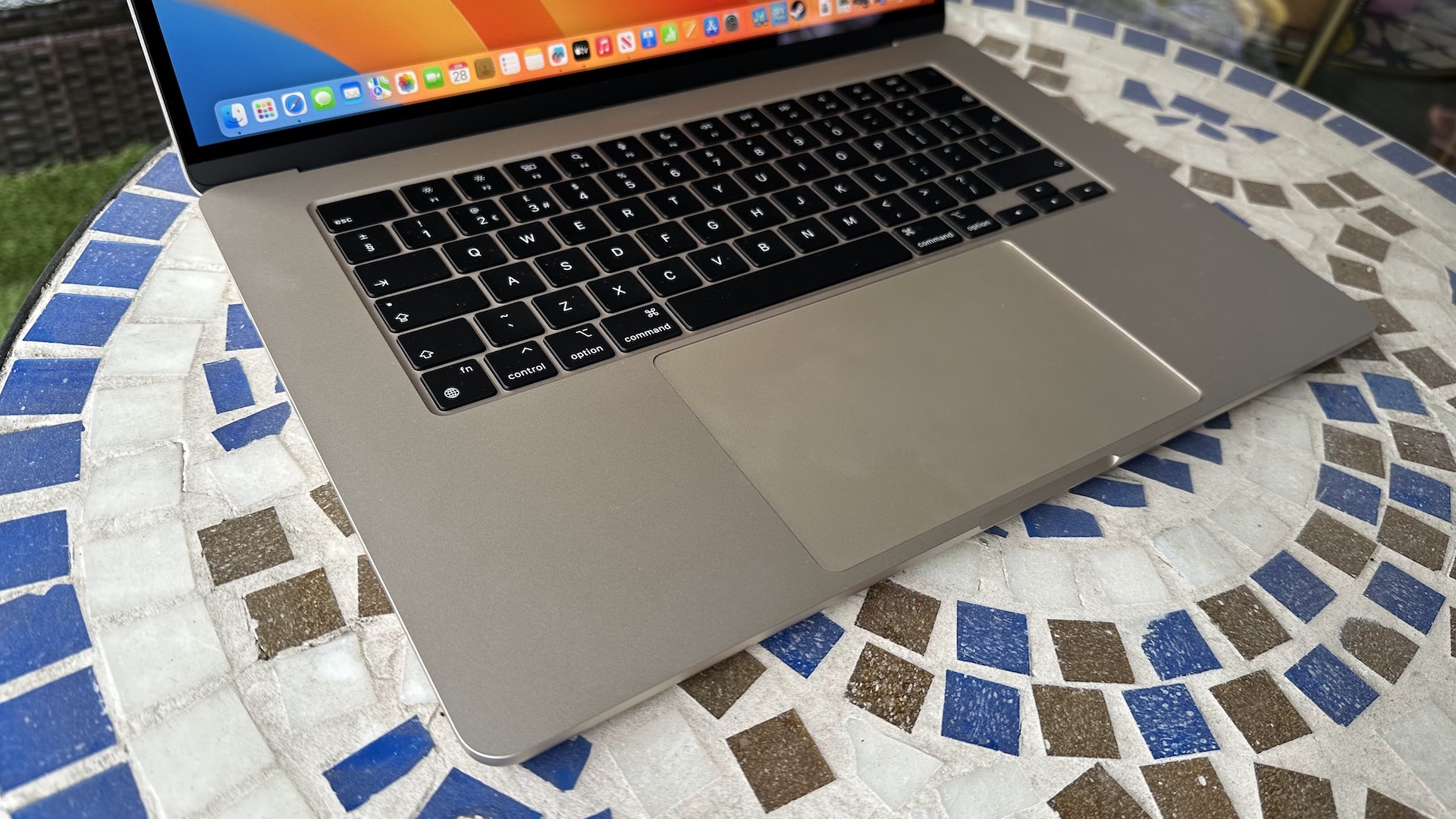
Also, whereas the 13-inch model only hides four speakers under its chassis, there are six in the 15-inch MacBook Air. It sounds phenomenal. Louder than the 13-inch, and with richer low frequencies, it now sounds almost as good as the 16-inch MacBook Pro — which, for my money, is the best-sounding laptop money can buy.
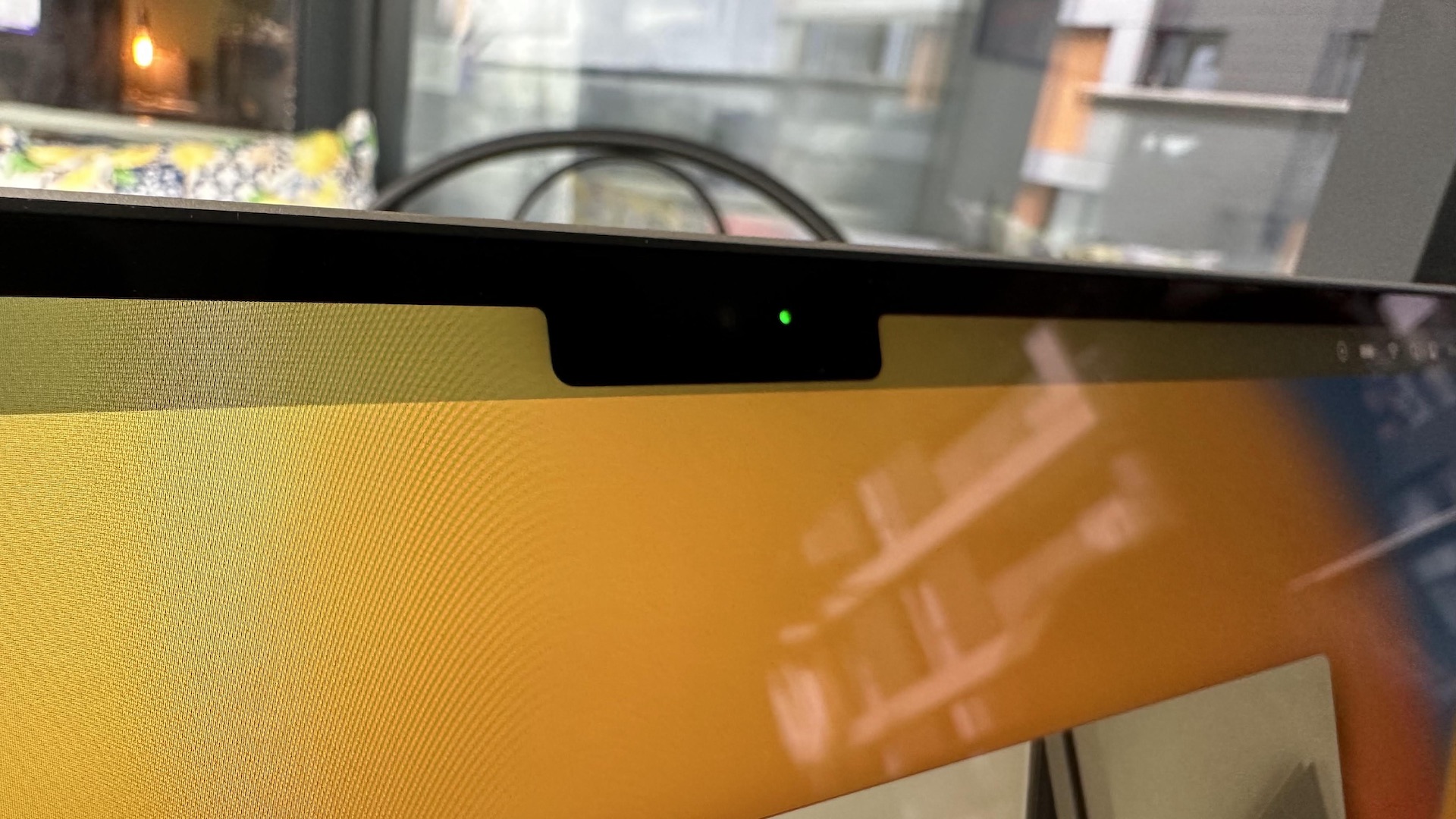
But ports, charging, and the webcam remain the same whichever M2 MacBook Air you grab. A sharp 1080p FaceTime webcam sits in a notch on the top center of the display (don’t worry about that notch, you’ll forget it even exists within minutes), and two USB-C Thunderbolt 4 ports sit on the left-hand side of the machine, offering high data transfer speeds and support for up to one 6K-resolution external monitor. These can also power and charge the laptop, but the returning MagSafe charging port, with a cable that magnetically snaps on and off, gets its own dedicated spot on the side of the 15-inch MacBook, meaning you’ve effectively got one ‘freer’ Thunderbolt port than you did on the M1 MacBook Air. MagSafe, may you never leave MacBooks ever again. Rounding off the spec sheet is a 3.5mm headphone jack on the right-hand side, Wi-Fi 6 (802.11ax), and Bluetooth 5.3.
One slightly unexpected side effect of the increased size of the device however is that the lack of ports on the right-hand side of the MacBook Air 15-inch is even more keenly felt. I usually use my MacBook Air 13-inch on a stand to the left of my monitor — the Thunderbolt cable that connects to the two just about reaches to that far left side. On the 15-inch Air, those cables are now stretched taut. Yes, I hear you — buy longer cables! Move the MacBook to the right! All possible of course — but a new machine should slide easily into your workflow — and without right side ports, it’s a little more difficult with the 15-inch MacBook Air. For comparison’s sake, the 14-inch MacBook Pro and 16-inch MacBook Pro have ports on both sides.
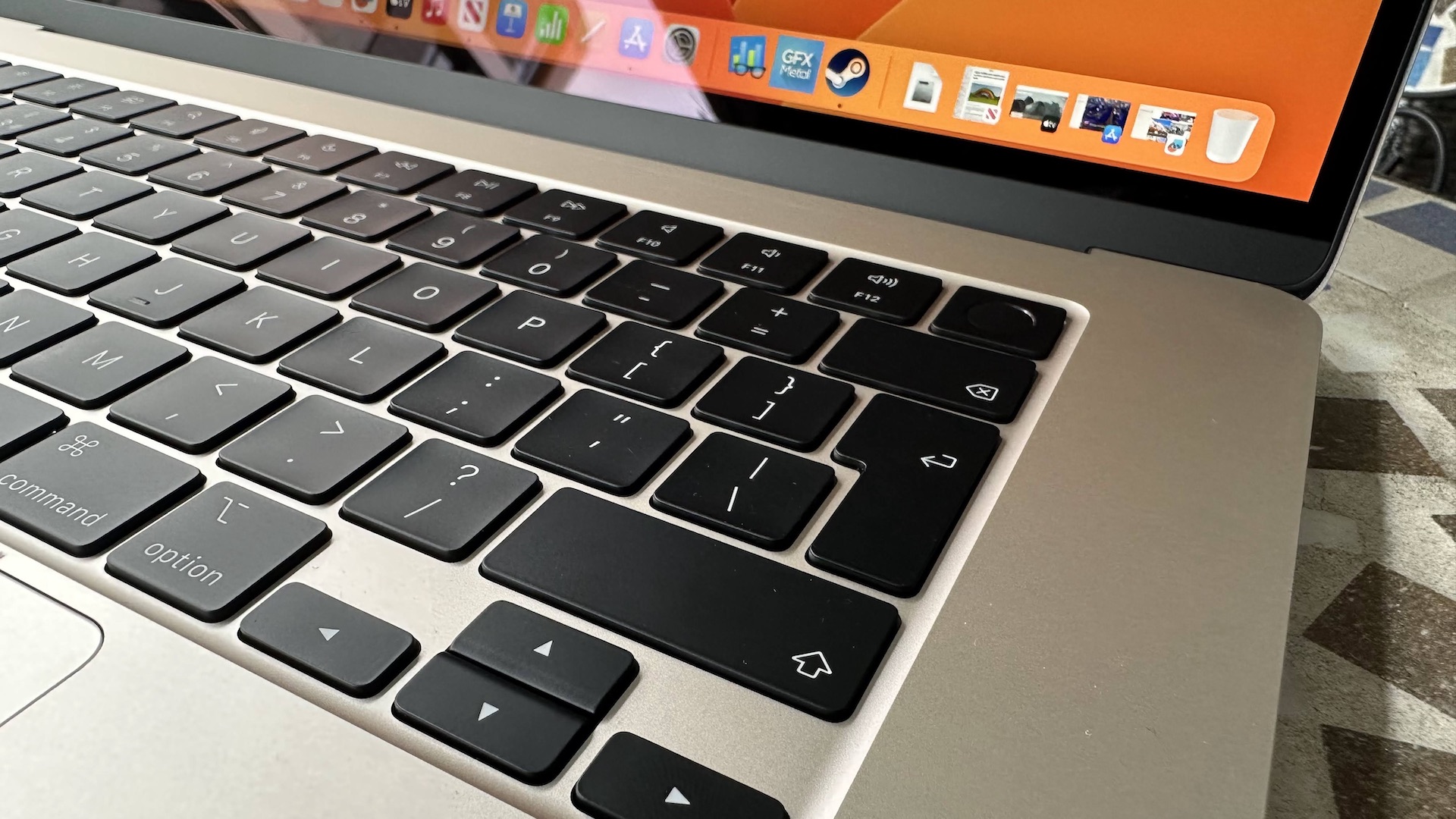
In terms of colors, you once again have the option of a gold-like Starlight (pictured in this review), a dark Space Grey and Silver, as well as a near-black Midnight. That last option is particularly attractive but has been known to be quite the fingerprint magnet, so keep that in mind.
MacBook Air 15-inch (M2, 2023): Software and performance
I’ll give you the TL,DR answer upfront — if you know what performance the 13-inch M2 MacBook Air offers, you’ll know what sort of performance to expect from the 15-inch MacBook Air, too.
Apple continues to pit the M2 against the ‘most popular’ Core i7 Windows laptop, claiming 2x faster video transcode performance in Premiere Pro, 2x faster Photoshop work with filters and effects, and more than twice the battery life in a Zoom video conferencing test. But in some respects it’s become like comparing literal apples and oranges, given the homegrown nature of Apple’s software and services, tuned to the precise hardware it creates.
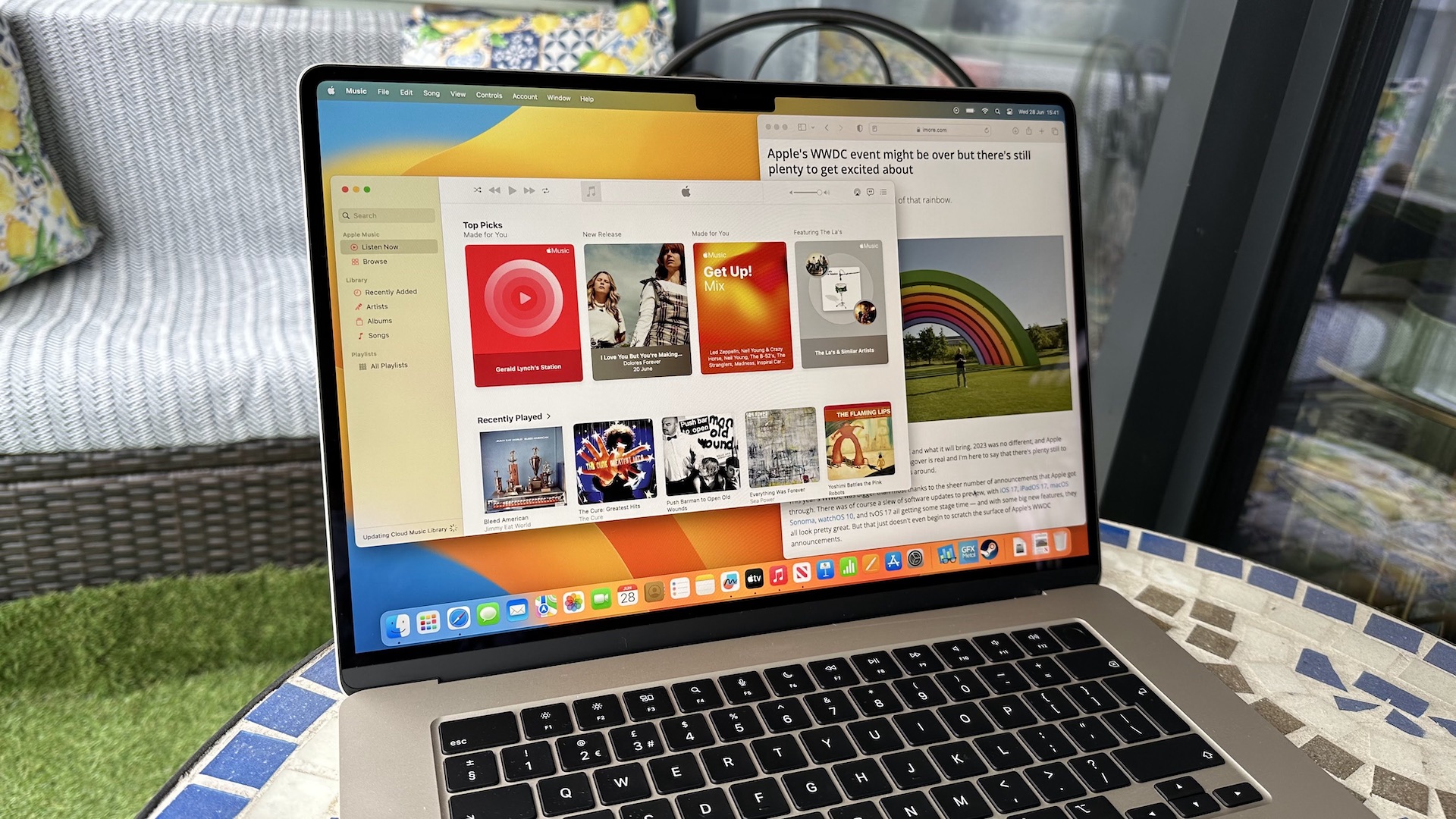
Aside from a point here or a frame there, presumably down to some minor cooling differences, synthetic benchmarks across GeekBench, GFXBench Metal, and our go-to Tomb Raider gaming test show performance on a par with the 13-inch MacBook Air. GeekBench delivered a single core average of 1913 and a multicore average of 8904. GFXBench Metal’s 1440p 3D graphics performance test hit a 103fps average, and the same test at its 4K setting delivered 47fps. Tomb Raider, at a resolution of 2560 x 1600 at Ultimate settings, averaged 27fps.
| Device | CPU | Single Core | Multicore |
|---|---|---|---|
| MacBook Air 15-inch (2023) | M2 (8-core CPU / 10-core GPU) | 1,913 | 8,904 |
| MacBook Pro 14-inch (2023) | M2 Pro (12-core CPU / 19-core GPU) | 1,947 | 15,097 |
| MacBook Pro 16-inch (2023) | M2 Pro (12-core CPU / 19-core GPU) | 1,961 | 15,061 |
| MacBook Air 13-inch (2022) | M2 (8-core CPU / 10-core GPU) | 1,917 | 8,950 |
| MacBook Pro 13-inch (2022) | M2 | 1,920 | 8,869 |
| MacBook Pro 13-inch (late 2020) | M1 | 1,705 | 7,382 |
| MacBook Air (late 2020) | M1 | 1,702 | 7,400 |
| Dell XPS 15 (2023) | i7-13700H | 1,779 | 8,680 |
| Dell XPS 17 9700 | i7-10875H | 1,282 | 8,119 |
| Dell XPS 15 9500 | i7-10875H | 1,318 | 7,621 |
| Razer Blade Pro 17 | i7-10750H | 1,314 | 6,164 |
| ASUS ROG Zephyrus G14 | Ryzen 4900HS | 1,221 | 7,982 |
| Surface Book 3 | i71065G7 | 1,298 | 4,511 |
| Dell XPS 13 9300 | i7-1065G7 | 1,284 | 4,848 |
Keep in mind that Tomb Raider doesn’t support Apple’s MetalFX graphics standard, which is starting to make its way to more games, including recent hits like Resident Evil Village and No Man’s Sky. For premium games optimized with MetalFX, you can expect impressive results then, and Apple’s recent efforts to promote the API and its upscaling methods will see more high-end games running at better frame rates on the Mac platform in the coming months.
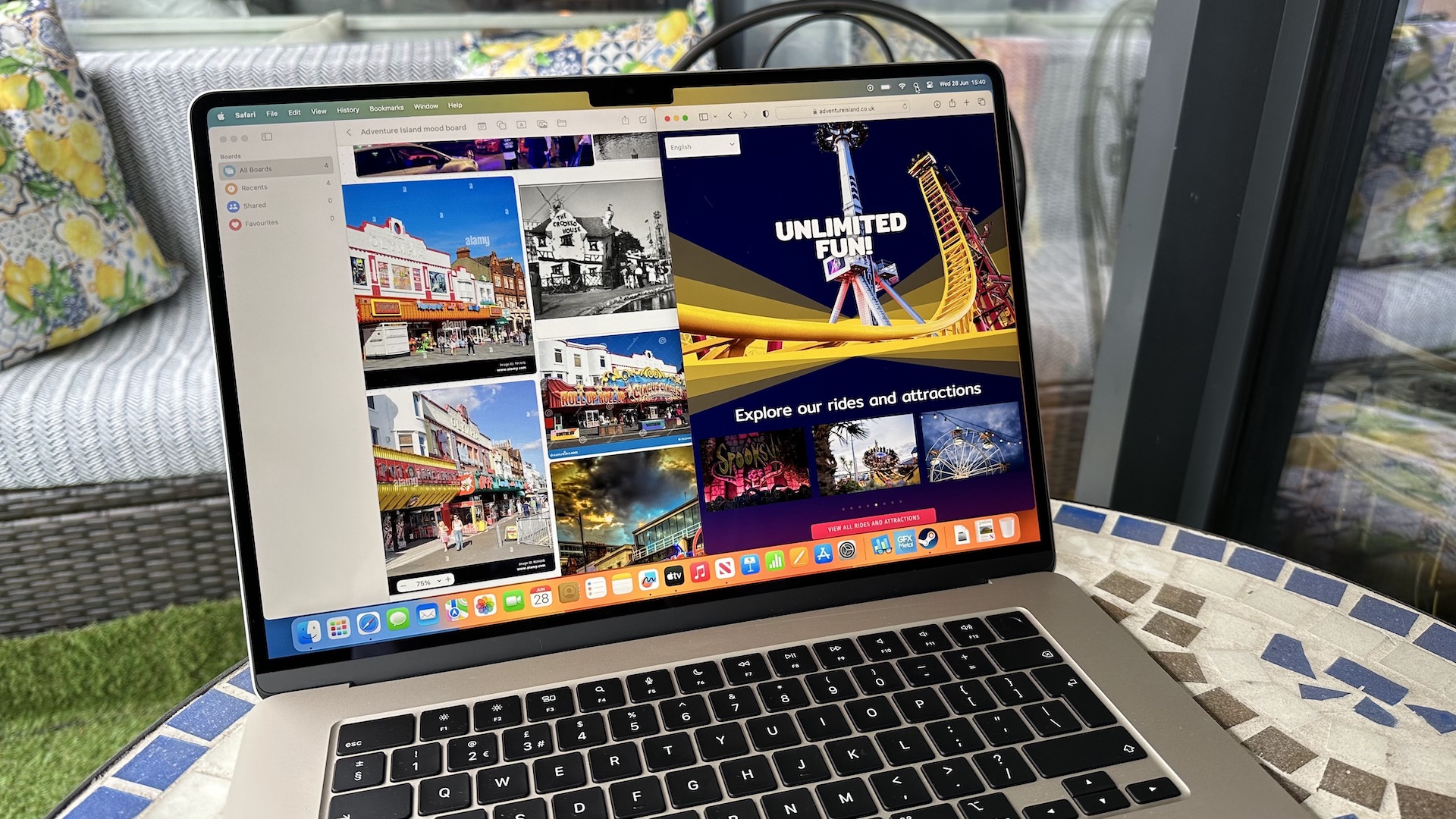
For 99% of the tasks 99% of the computer-owning population need to do every day, the 15-inch MacBook Air is perfect.
What does this mean for real-world usage then? Well, unless you’re going to pummel the 15-inch MacBook Air with 3D graphics renders or 8K video exports, or expect it to be some sort of AAA-gaming beast, it won’t break a sweat for its target audience. Web browsing, documents, video playback, some fun mucking around with Apple Arcade games or Garageband, and some FaceTime calls — you could get all of this going at the same time and the M2 chip wouldn’t hiccup. It’s stable in that performance too — I didn’t experience a single crash or app hang-up in all my time testing the computer. For 99% of the tasks 99% of the computer-owning population need to do every day, the 15-inch MacBook Air is perfect.
I would note though that I’m using the 16GB model — it’s telling that Apple provides this RAM amount as standard to reviewers, as I think you’d start to see some memory bottlenecking at the 8GB baseline level. And likewise, the speed limits of the 256GB storage option have not gone away with the 15-inch model — you’ll need to jump to the 512GB storage option to see the storage working to its best potential — though few will be able to notice. Regardless, as mentioned, the 16GB / 512GB SSD configuration is the sweet spot here.
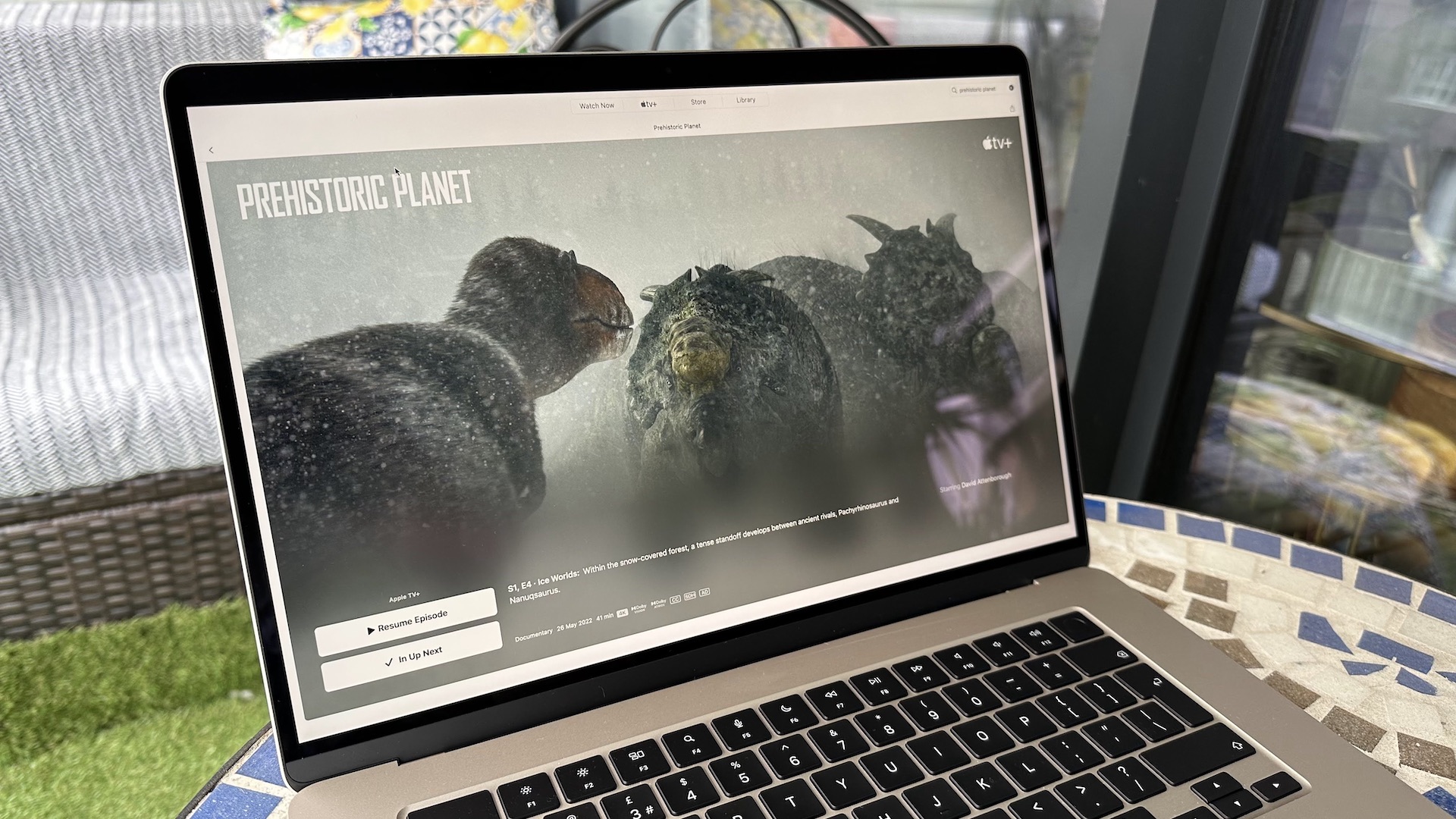
It’s worth remembering this is all achieved silently — you’ve still got a fanless design at play here, with the chassis passively dissipating heat. Testing of the 13-inch MacBook Pro, with a fan present, saw it eke out a little more performance from the same chipset as throttling was less of an issue — but it’s not a night-and-day difference, and while the M2 Air models can get warm, particularly in the area between the screen and function keys, they never become uncomfortably so.
MacBook Air 15-inch (M2, 2023): Battery
Apple’s own M2 silicon, as seen in last year’s 13-inch MacBook Air and this year’s MacBook Pro models, is exceptionally efficient. You can hammer these machines all day long with complex tasks and still have power to spare. The 15-inch MacBook Air keeps up this fine tradition.
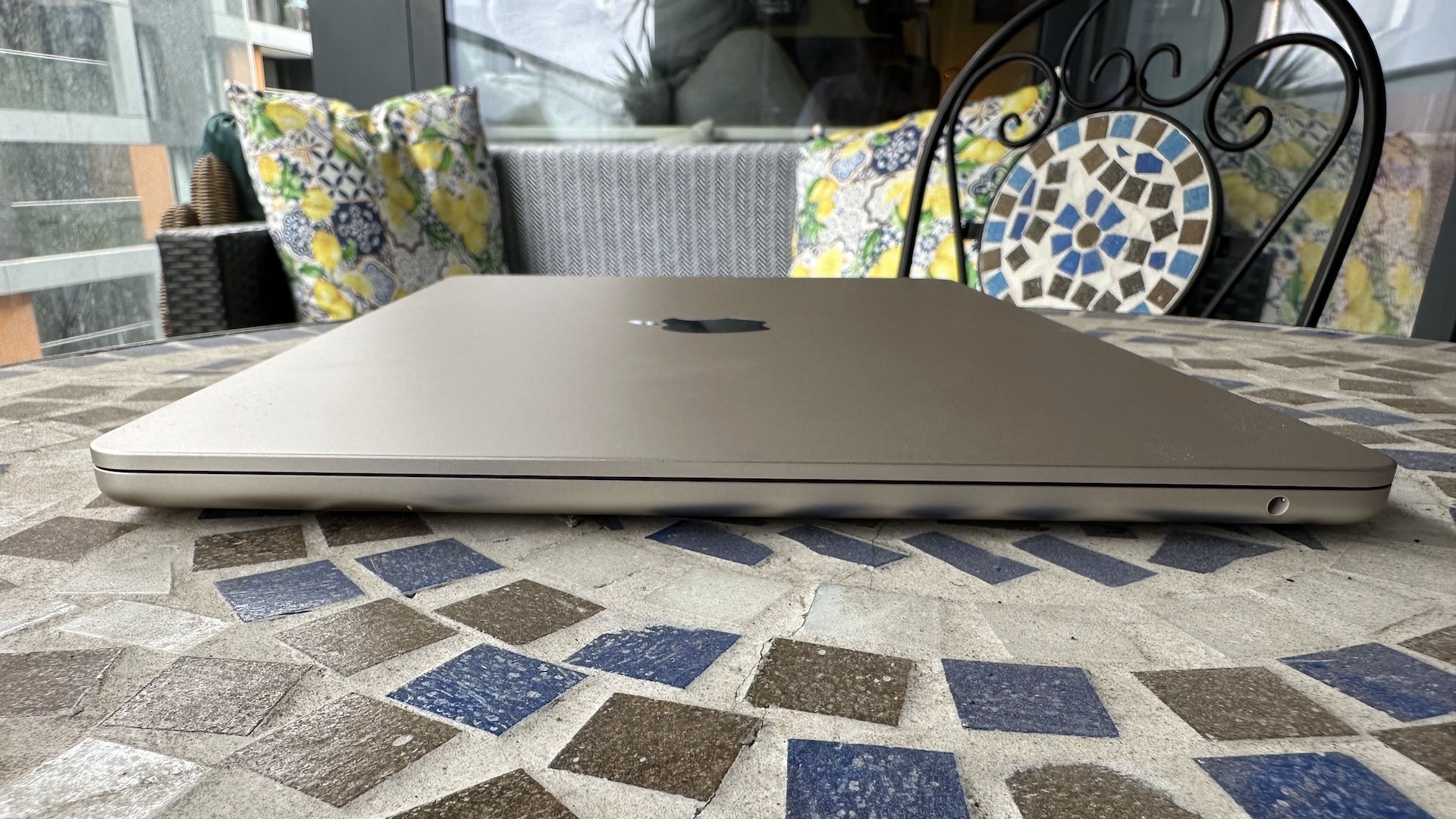
Apple quotes 15 hours of wireless web browsing and 18 hours of Apple TV app video playback for the 15-inch MacBook Air, the same as it offered with the 13-inch model. That’s with the screen brightness dialed to halfway, and I’d say that’s a fair estimation based on our tests. With brightness dialed up, I pushed close to an average of 13 hours of consistent real-world, mixed task use on the 15-inch MacBook Air, notably better than the 12-ish hours I squeeze out of the 13-inch model.
If we were to nitpick, you could argue that with that slightly larger chassis size to play with, we’d have hoped for a greater increase in battery life. But in reality that bigger screen is going to draw more power, and we’ll happily take the small bump that the 15-inch model offers.
MacBook Air 15-inch (M2, 2023): Competition
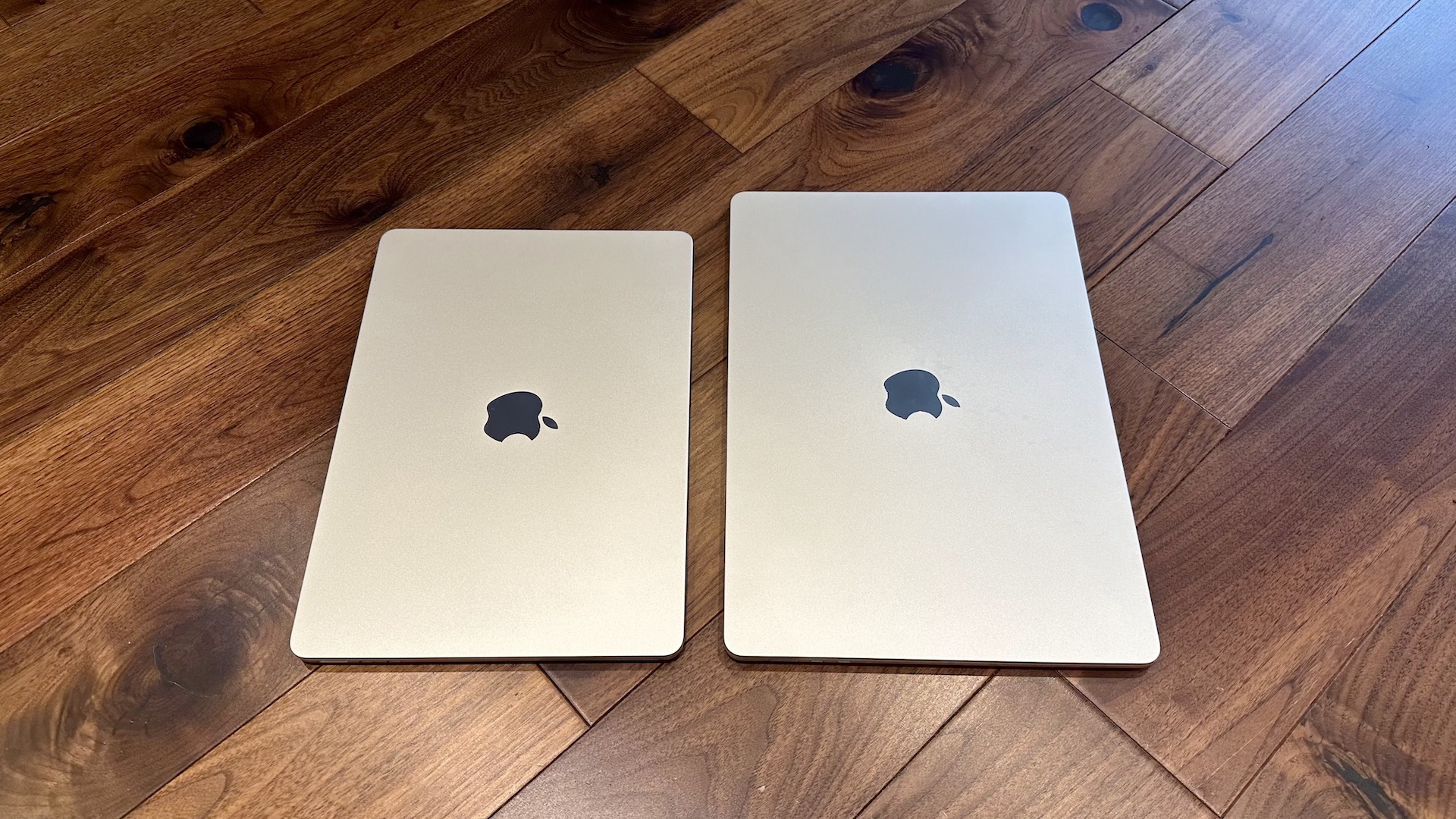
When it comes to considering buying a Mac, the real competition is the other options in Apple’s computing lineup. While the 13-inch MacBook Air faced off against the M1 MacBook Air (still going strong at $999 / £999) and, arguably, the M2 iPad Pro by virtue of its portability, the 15-inch M2 MacBook Air battles against last year’s 13-inch model and this year’s 14-inch MacBook Pro.
If portability isn’t an issue, you’re desk-tied and have a monitor ready, it’s worth considering this year’s excellent desktop M2 Mac Mini.
When it comes to the 13-inch MacBook , the choice is simple — do you want a cheaper, lighter machine that offers the same general performance as the 15-inch model, and don’t need the extra screen space? Buy the 13-inch model then — it won’t disappoint. Want a bigger screen? 15-inch all the way.
It gets more complicated with the 14-inch or the 16-inch MacBook Pro. These are considerably more expensive machines, with more ports, brighter screens, and far more power under the hood, and can be configured into superlative states that push performance to their limits. Really ask yourself though — do you need that extra processing power? Are you a high-end videographer, 3D graphics artist, or audio engineer? If the answer is no, you can probably make do with a MacBook Air. And, thanks to the 15-inch MacBook Air, you can now do so without having to trade screen real estate in the process.
If portability isn’t an issue, you’re desk-tied and have a monitor ready, it’s worth considering this year’s excellent desktop M2 Mac Mini too — you’ll get the same performance at a much lower cost, provided you don’t want to take your work with you.
If you’re looking to buy a Mac, it’s because you really want to stay in that Apple software ecosystem of course. But there are Windows machines worth considering in the space too. The Dell XPS 15 is similarly sized and offers an OLED display. And while its base model is less powerful and frustratingly more expensive than the Air, it can be configured with a discrete Nvidia RTX 4070 GPU that’d make it a very capable gaming machine.
MacBook Air 15-inch (M2, 2023): Should you buy it?
Buy the MacBook Air 15-inch (M2, 2023) if….
You want a big screen on a (relative) budget
For not a hell of a lot more money than the 13-inch model, you get substantially more screen real estate.
Your workflow consists of everyday tasks
Provided you’re not looking to do big 3D rendering jobs or high-end video editing, the M2 chip here can handle anything you throw at it.
You expect to watch lots of movies on your laptop
The MacBook Air 15-inch has room for more speakers than its smaller stablemate, resulting in a richer cinematic experience.
Don’t buy the MacBook Air 15-inch (M2, 2023) if….
You want high-end power to accompany the screen size
If you have a need to do high-end video production or 3D graphics work, you should be looking at the latest MacBook Pro machines instead.
You’re tight on cash
The 13-inch M1 MacBook Air remains a great machine for everyday tasks and is much cheaper than this scaled-up redesign.
You need to keep backpack weight and size to an absolute minimum
The 15-inch MacBook Air is light and portable, but of course, the 13-inch version shed some weight and is more easily accommodated in a small bag or workspace.
MacBook Air 15-inch (M2, 2023): Verdict
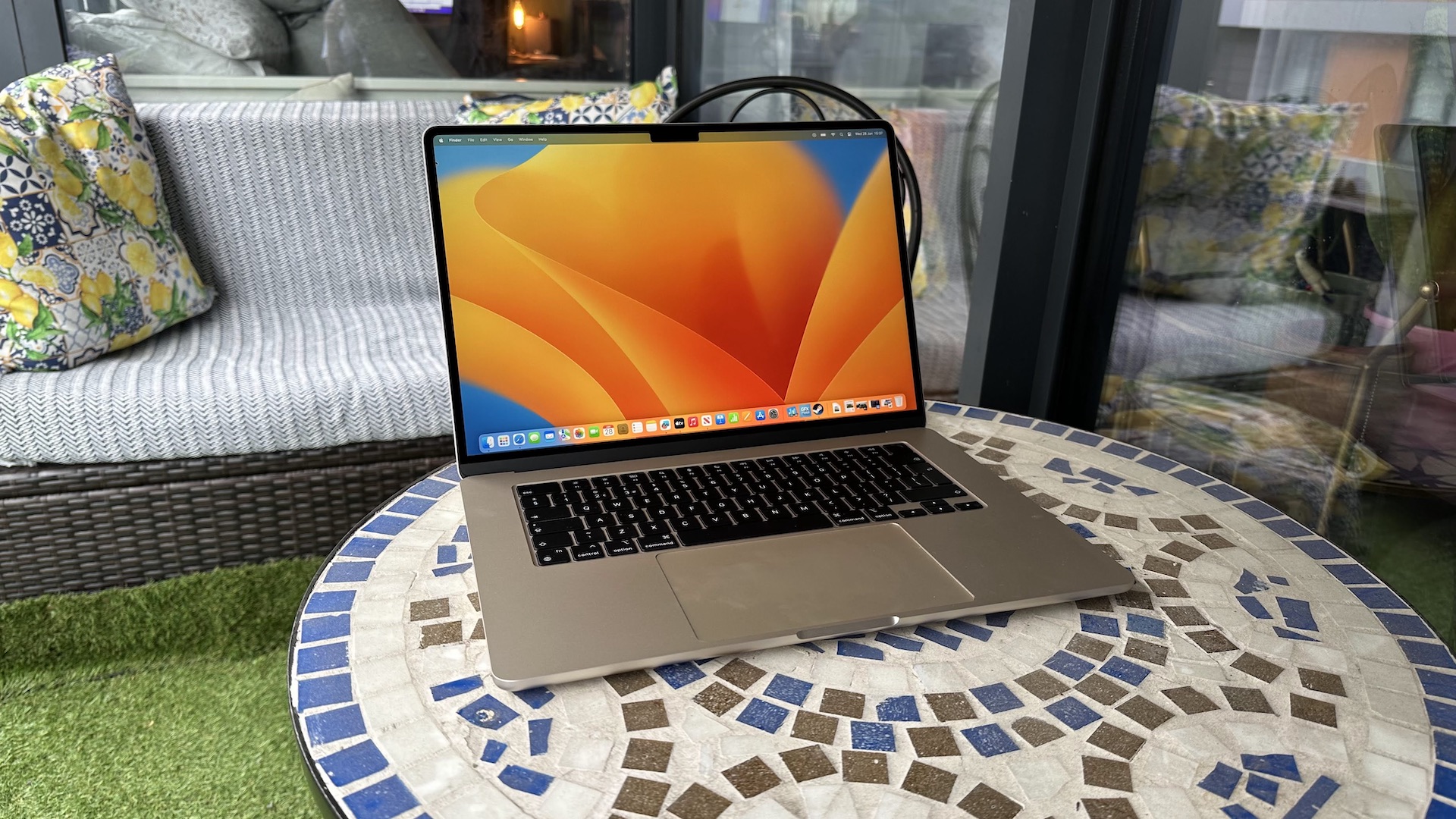
‘Let them eat cake’? Where’s the spoon?
The 15-inch MacBook Air, if you were in any doubt, is marvelous. It’s a perfect balance between a larger screen and lightweight portability, while the M2 chip continues to be an excellent performer in all but the most absolutely-demanding scenarios. That you get the extra screen real estate and improved speakers without a gigantic leap in price means that the 15-inch MacBook Air will likely quickly become the go-to computing device in the Mac range for the vast majority of Apple fans.
In many respects, it’s the most simple of updates — people like big screens, so make your most popular computer bigger. I’m sure there have been internal discussions at Apple over whether this will cannibalize MacBook Pro sales as a result, but the 15-inch’s very existence suggests Apple is confident that won’t happen. And so it’s one of those rare occasions where Apple’s economics seems in line with the times — yes, people want larger screens, but don’t often need the power of (nor can currently afford) the prices of the souped-up Pro models. The end result? A device that answers the needs of the customer, at a price that won’t alarm them.
‘Let them eat cake’? Where’s the spoon?
